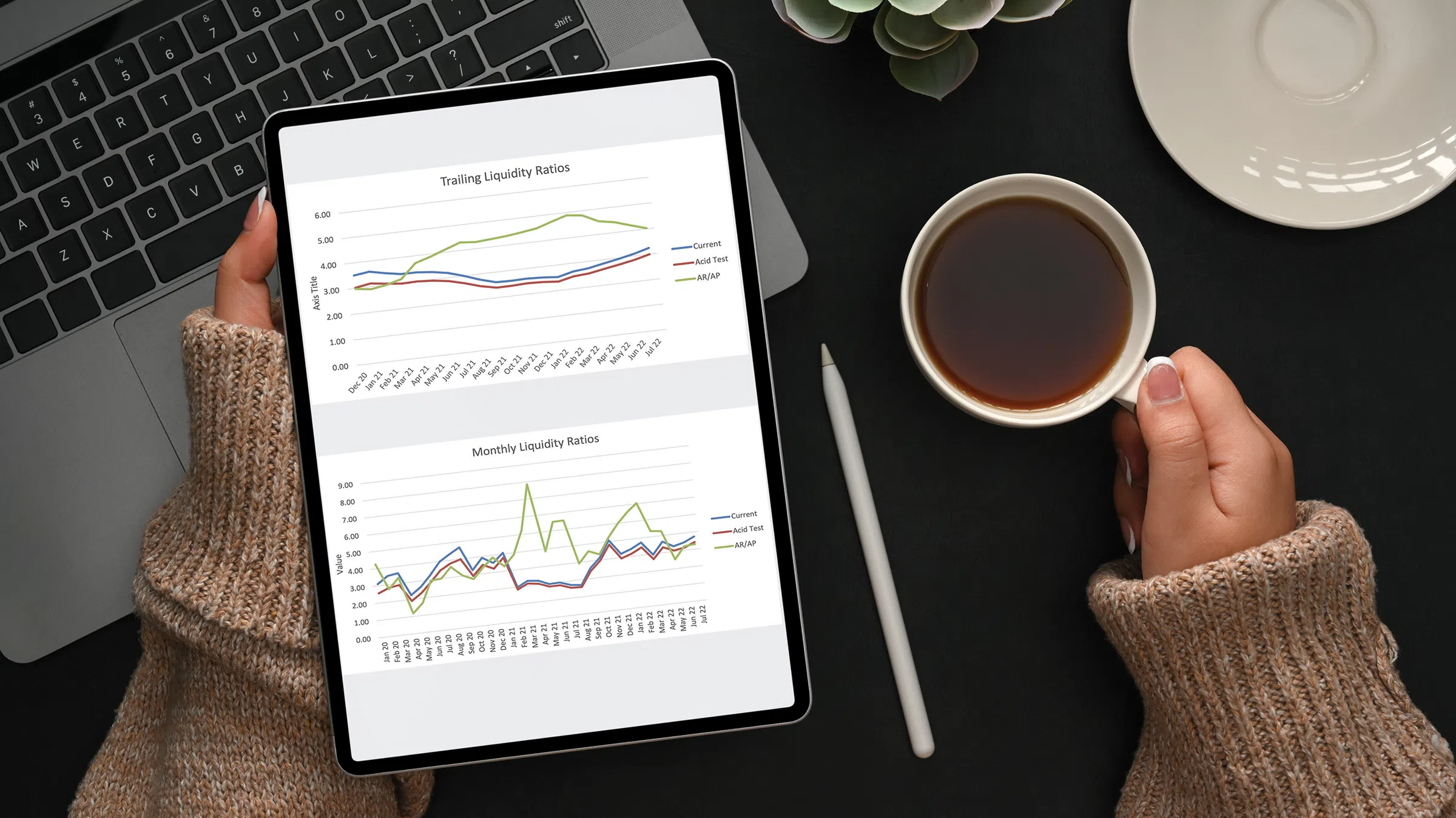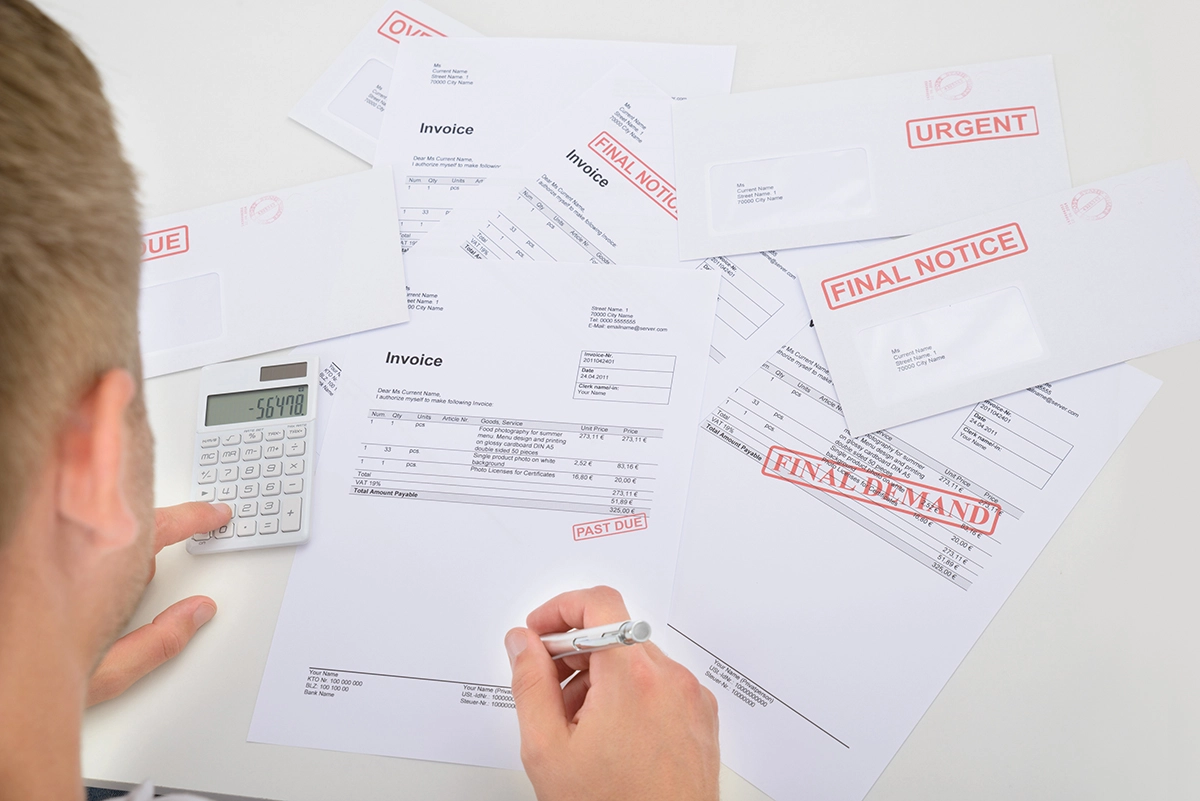Accurate balance sheets are critical to making good business decisions. Make sure your company is not making these mistakes. I would advise that you never cut corners on this step, whether you have a professional bookkeeper or you choose to balance the books yourself.
Negative Cash and Lousy Bookkeeping
The company cannot have negative cash. First, the banks will charge exorbitant fees for bouncing checks and, if there are too many bounced checks, the bank will close the account. Most of the time negative cash is the result of this lousy bookkeeping mistake. Someone printed checks from the accounting system and the checks were left sitting on the bookkeeper’s desk waiting until there was enough money in the account to send them and they were sent too late, or too early. This is not a good way to manage your accounts payable.
Alternatively, there may have been a lot of money in undeposited funds that have been deposited, but the deposit was not made in your accounting system.
Make sure the bookkeeper isn’t printing checks and having them sit on his or her desk until the money comes in to pay the bills. And, as a regular rule of order, make sure all undeposited funds get deposited in the bank. Otherwise, there is too much room for error.
Negative Accounts Receivable
The company cannot have negative accounts receivable. Yes, on the accounts receivable aging report, there may be a few customers to whom the company owes a refund or who overpaid their bill by a dollar or two. However, the company doesn’t owe its entire customer-base, money.
Generally, this mistake happens when the company receives a deposit for a job and there is not a liability account set up (usually it is deferred income – deposits). The deposit goes into accounts receivable, and it is “negative” because there is not an invoice to offset that amount.
This is an easily remedied mistake. Simply, make sure there is a deferred income account in current liabilities for job deposits. Then the company will not see negative accounts receivable.
Inventory and Balance Sheets
The company’s balance sheet is incorrect if inventory is not listed, or if it shows the same inventory number each month. Then the company’s cost of goods sold is higher than it should be, and the profits are lower than they should be.
Even worse is seeing negative inventory – phantom parts! Most of the time this mistake can be traced back to an inaccurate accounting of inventory. It happens when materials/equipment have been credited from inventory for use on jobs. But when the inventory was ordered, the inventory did not get logged as inventory but instead went into the cost of goods sold.
For an accurate balance sheet, make sure inventory is accounted for properly and you will not see this error again.
Negative Credit Cards
The only way a company can have a negative credit card balance is if the credit card bills are prepaid or the company has a refund on a purchase and it was the only activity on the card. Prepaying the bill doesn’t happen very often except, perhaps, at the end of your fiscal year.
Most of the time, the credit card company doesn’t owe the company money. The company owes money to the credit card company. This mishandling of accounting is generally traced to a bookkeeping error.
Negative Payroll Taxes
In most cases, the company cannot have negative payroll taxes. If the company had negative payroll taxes, it would mean that the government would owe the company money. This is very unlikely. However, there are exceptions and I have seen cases where the payroll company makes mistakes and overpays the company’s payroll taxes. In these rare cases, the payroll tax balance on the balance sheet will be negative.
Payroll taxes are paid by the employee and the company. This is where the confusion often comes in. And, if the payroll taxes are paid weekly, these liability amounts should be zero (except if the payroll tax is due on the first day of the next month – then there could be a negative value).
The company should not have negative garnishment payments, health insurance payments, 401(k) payments, etc. The company owes money to those entities. They do not owe money to the company – unless, again in rare cases, there has been a mistake and the bills were overpaid.
Negative Loan Payments
The company can’t have negative loan payments – that means that the bank owes the company money for the loan. Generally, this happens at the end of the loan if the entire principal repayment was debited against cash when the payments were made.
The monthly loan repayments are a combination of principal reduction and interest. For example, if the monthly payment is $750, then $500 could be a reduction of the loan principal (a balance sheet item) and $250 is interest (a P&L item).
If there are negative loan payments, find out what the actual loan amount is and correct it on the balance sheet. The difference is in the interest payments – which belong as expenses on your P&L.
Make sure the company’s balance sheet has positive balances everywhere except in accumulated depreciation and equity. If there are negatives, the balance sheet is wrong. Correct the mistakes and make sure your team is delivering clean and accurate bookkeeping and accounting. Then, once again confident in your accounting, you can make good decisions based on accurate information.
Ruth King has more than 25 years of experience in the HVACR industry and has worked with contractors, distributors and manufacturers to help grow their companies and become more profi table. Contact Ruth at ruthking@hvacchannel.tv or at 7707290258.






